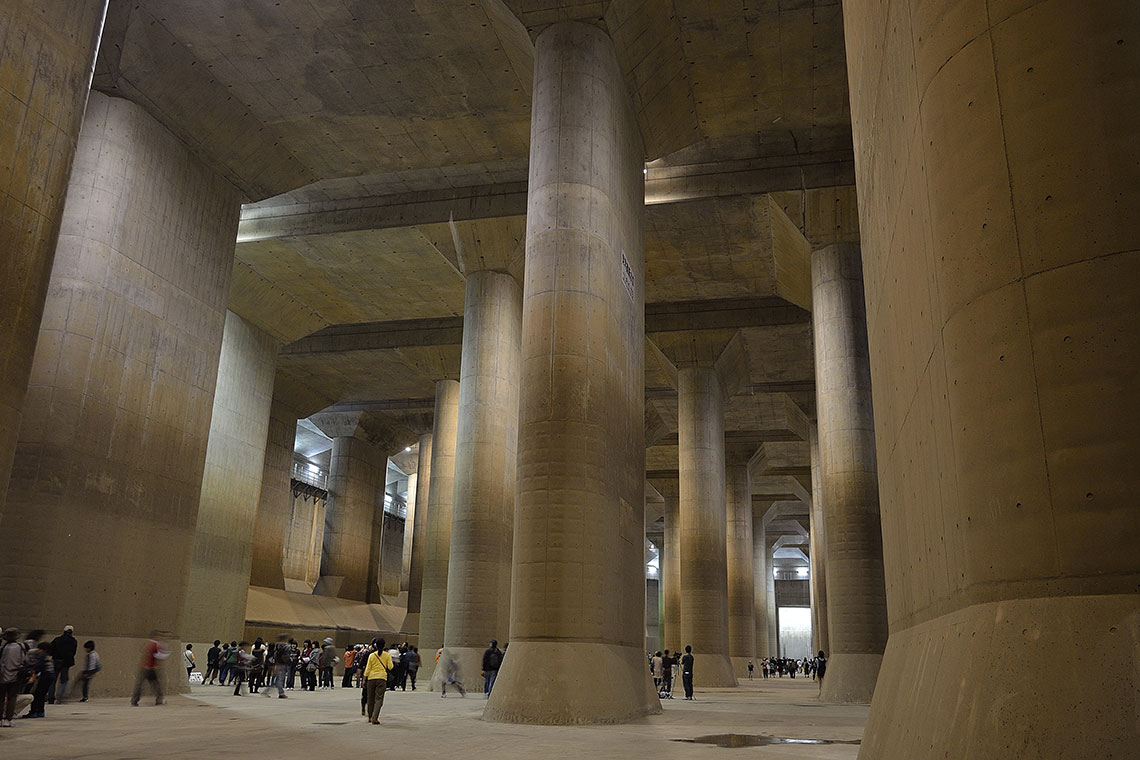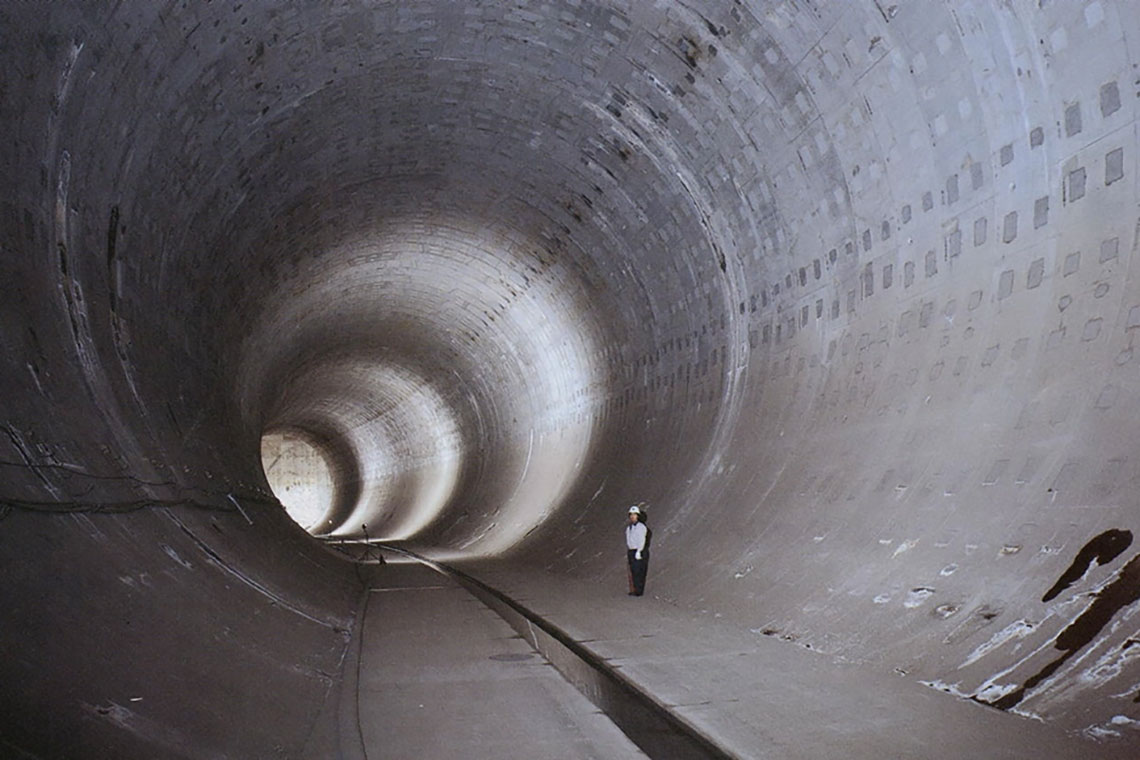A network of massive steel-built gates, levees and tunnels are crucial to Tokyo’s ongoing battle against the impacts of climate change.
Over the past two decades, Tokyo has been experiencing an increasing frequency and severity of flooding events, posing significant challenges to the city’s infrastructure and inhabitants.
Rapid urbanization, coupled with climate change-induced extreme weather patterns, has exacerbated the risk of flooding in the largest city on earth, and Tokyo continues to witness severe weather events, including typhoons, heavy rainfall and swelling rivers.
The resulting floods have caused widespread damage to property, disruption of transportation networks, and loss of life. In response, the city has implemented various measures to mitigate the impact of flooding, including its gargantuan flood defence cathedral.

Supported by 500-tonne, steel-reinforced pillars Tokyo's flood defence cathedral is a triumph of engineering
A steel-built engineering marvel
The crown jewel in Tokyo’s flood defence system, the cathedral is an enormous water tank supported by dozens of 500-tonne, steel-reinforced pillars. Situated 22 metres under the city streets, the structure is part of the Metropolitan Area Outer Underground Discharge Channel (MAOUDC).
Able to temporarily store and redirect floodwaters away from the city centre during periods of heavy rainfall or typhoons, this 6.3km-long network of huge chambers and connecting tunnels primarily protects the northern parts of the city from flooding.
Capable of storing up to 200,000 cubic meters of water, the network’s cylindrical chambers are constructed from steel-reinforced concrete to ensure that they can withstand the immense pressure exerted by the stored water, thereby safeguarding the integrity of the entire structure.
Steel’s ductility and strength also play a key role in role in ensuring that Tokyo’s flood defences are earthquake resistant, a crucial aspect in one of the world most seismically active zones.
Costing $2bn, the MAOUDC is part of a huge investment in disaster reduction which Japan has been undertaking since the 1950s and is testament to the city’s proactive approach to managing flood risk in its densely populated urban environment.
The intricate network of levees, stormwater drainage systems, and underground tunnels are also supported by advanced monitoring and early warning systems, enabling authorities to anticipate and swiftly respond to flood threats.

A 6.3km-long network of flooded defence tunnels runs underneath Tokyo's streets
Making Tokyo ready for anything
Tokyo’s flood and tsunami defences also include gates across the metropolitan zone’s many rivers. With many of them originally built in the 1970s, the city has been retrofitting these gates to be more seismically resistant.
With such a massive flood defence network, reducing maintenance pressure is also a key part of the city’s protection programme. As such, the decision was made to use a new lightweight stainless steel that would be resistant to corrosion while also offering high earthquake resistance.
The development of new steel alloys has expanded the engineering solutions on offer to the city. Removing the need for costly and time-consuming recoating with corrosion-resistant paint has bolstered flood defences across the city.
Tokyo’s incredible civil engineering achievements underline the role that the right technology and materials can play in the battle to mitigate the impacts of climate change.
At the heart of the world’s largest city are flood defences that make innovative use of steel, a material whose strength, durability, and versatility make it indispensable for projects where structural integrity and long-term performance are paramount.
Images: Government of Japan, Wikicommons